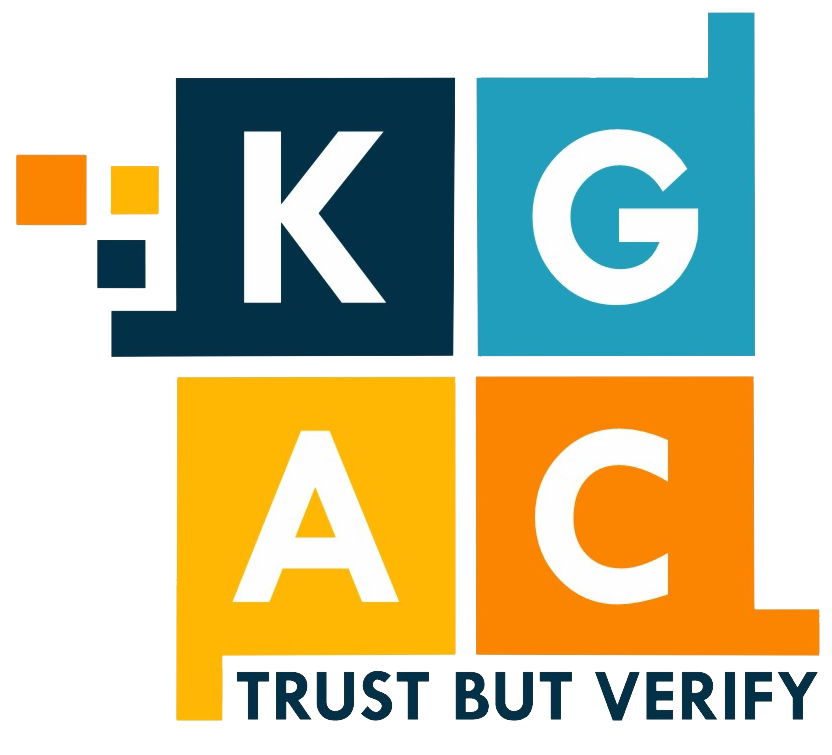
When it comes to banking audits, the subtle signs—not the glaring errors—often reveal the biggest risks. Hidden beneath seemingly normal financial statements can be red flags signaling potential compliance breaches, fraud, or economic instability. At 𝗧𝗵𝗲 𝗞𝗚𝗔𝗖, we don’t just identify these less obvious risks, we proactively work to help banks address issues before they escalate, ensuring a secure financial environment.
So, what are some of these subtle signs that auditors should never ignore? Let’s take a closer look.
𝗨𝗻𝘂𝘀𝘂𝗮𝗹𝗹𝘆 𝗖𝗼𝗻𝘀𝗶𝘀𝘁𝗲𝗻𝘁 𝗙𝗶𝗻𝗮𝗻𝗰𝗶𝗮𝗹 𝗥𝗮𝘁𝗶𝗼𝘀: 𝗧𝗼𝗼 𝗚𝗼𝗼𝗱 𝘁𝗼 𝗕𝗲 𝗧𝗿𝘂𝗲?
Consistency might sound good in financial statements, but when ratios like the debt-to-equity or current ratio remain suspiciously stable over time, it can be a red flag. Real business environments are dynamic, and some fluctuations are normal. Too much consistency might suggest that numbers are being adjusted to hide volatility.
𝗪𝗵𝗮𝘁 𝗧𝗵𝗲 𝗞𝗚𝗔𝗖 𝗟𝗼𝗼𝗸𝘀 𝗙𝗼𝗿:
At The KGAC, we don’t just look at the surface. We dig deeper into the data behind these ratios, examining transaction-level details to see if any smoothing or adjustment is happening to present a more favorable picture. Our thorough process ensures that consistency reflects genuine stability, not creative accounting, instilling confidence in the effectiveness of our audits.
𝗨𝗻𝗿𝗲𝗰𝗼𝗻𝗰𝗶𝗹𝗲𝗱 𝗔𝗰𝗰𝗼𝘂𝗻𝘁𝘀: 𝗧𝗵𝗲 𝗚𝗮𝗽𝘀 𝗶𝗻 𝘁𝗵𝗲 𝗟𝗲𝗱𝗴𝗲𝗿
Reconciliations are the unsung heroes of financial accuracy. When bank accounts, loans, or credit card balances show discrepancies that aren’t promptly reconciled, it’s a red flag. Unreconciled accounts could mean anything from simple oversight to more serious issues like hidden liabilities or even fraud.
𝗪𝗵𝗮𝘁 𝗧𝗵𝗲 𝗞𝗚𝗔𝗖 𝗟𝗼𝗼𝗸𝘀 𝗙𝗼𝗿:
At 𝗧𝗵𝗲 𝗞𝗚𝗔𝗖, we prioritize timely and accurate reconciliations as part of every audit. Any unexplained discrepancies are investigated thoroughly to ensure they don’t mask bigger problems. Our ability to identify and address these subtle signs should give you confidence in the security of your financial operations.
𝗦𝘂𝗱𝗱𝗲𝗻 𝗦𝗽𝗶𝗸𝗲 𝗶𝗻 𝗡𝗼𝗻-𝗣𝗲𝗿𝗳𝗼𝗿𝗺𝗶𝗻𝗴 𝗔𝘀𝘀𝗲𝘁𝘀 (𝗡𝗣𝗔𝘀): 𝗧𝗵𝗲 𝗦𝗹𝗼𝘄 𝗟𝗲𝗮𝗸
A sudden increase in NPAs might seem straightforward, but it’s the context that matters. Sometimes, banks may delay recognizing bad loans to keep financials looking healthy. A sharp rise could mean that previously hidden NPAs are finally surfacing.
𝗪𝗵𝗮𝘁 𝗧𝗵𝗲 𝗞𝗚𝗔𝗖 𝗟𝗼𝗼𝗸𝘀 𝗙𝗼𝗿:
At 𝗧𝗵𝗲 𝗞𝗚𝗔𝗖, we don’t just spot the spike in NPAs. We analyze loan ageing reports and repayment histories to understand if the spike is a one-off or part of a larger trend of misreporting. Identifying the true cause is essential for managing risks effectively.
𝗘𝘅𝗰𝗲𝘀𝘀𝗶𝘃𝗲 𝗜𝗻𝘁𝗲𝗿-𝗕𝗿𝗮𝗻𝗰𝗵 𝗧𝗿𝗮𝗻𝘀𝗮𝗰𝘁𝗶𝗼𝗻𝘀: 𝗦𝗵𝗶𝗳𝘁𝗶𝗻𝗴 𝘁𝗵𝗲 𝗕𝘂𝗿𝗱𝗲𝗻
While inter-branch transactions are a regular part of banking, an unusual increase can be a subtle red flag. Sometimes, they’re used to shift assets or liabilities temporarily to make a particular branch’s financials look better.
𝗪𝗵𝗮𝘁 𝗧𝗵𝗲 𝗞𝗚𝗔𝗖 𝗟𝗼𝗼𝗸𝘀 𝗙𝗼𝗿:
We track patterns in inter-branch transactions to ensure they’re legitimate and not just a way to hide poor performance or create an illusion of profitability. Consistency across branches is key.
𝗙𝗿𝗲𝗾𝘂𝗲𝗻𝘁 𝗖𝗵𝗮𝗻𝗴𝗲𝘀 𝗶𝗻 𝗔𝗰𝗰𝗼𝘂𝗻𝘁𝗶𝗻𝗴 𝗣𝗼𝗹𝗶𝗰𝗶𝗲𝘀: 𝗧𝗵𝗲 𝗥𝘂𝗹𝗲-𝗧𝘄𝗶𝘀𝘁𝗶𝗻𝗴 𝗚𝗮𝗺𝗲
When a bank frequently changes its accounting policies, especially related to loan provisioning, asset valuation, or revenue recognition, it’s time to dig deeper. Such changes can be a way to mask real financial performance.
𝗪𝗵𝗮𝘁 𝗧𝗵𝗲 𝗞𝗚𝗔𝗖 𝗟𝗼𝗼𝗸𝘀 𝗙𝗼𝗿:
Our audits include a thorough review of accounting policy changes over time to understand their motivation. Genuine changes should enhance clarity, not confuse it.
𝗛𝗶𝗴𝗵 𝗚𝗿𝗼𝘄𝘁𝗵 𝗶𝗻 𝗢𝗳𝗳-𝗕𝗮𝗹𝗮𝗻𝗰𝗲 𝗦𝗵𝗲𝗲𝘁 𝗜𝘁𝗲𝗺𝘀: 𝗥𝗶𝘀𝗸𝘀 𝗶𝗻 𝗗𝗶𝘀𝗴𝘂𝗶𝘀𝗲
Off-balance sheet items like derivatives, guarantees, or special purpose vehicles (SPVs) aren’t directly listed on financial statements but can carry significant risks. A rapid increase in these items can be a sign that a bank is hiding risks to maintain a cleaner balance sheet.
𝗪𝗵𝗮𝘁 𝗧𝗵𝗲 𝗞𝗚𝗔𝗖 𝗟𝗼𝗼𝗸𝘀 𝗙𝗼𝗿:
We examine off-balance sheet exposures closely to assess their real impact on the bank’s financial health. Transparency is key—risks shouldn’t just be hidden; they should be managed.
𝗥𝗼𝘂𝗻𝗱-𝗡𝘂𝗺𝗯𝗲𝗿 𝗧𝗿𝗮𝗻𝘀𝗮𝗰𝘁𝗶𝗼𝗻𝘀: 𝗧𝗼𝗼 𝗡𝗲𝗮𝘁 𝘁𝗼 𝗕𝗲 𝗥𝗲𝗮𝗹
Suspiciously frequent round-number transactions in a bank’s ledger can indicate that numbers are being adjusted manually. Real-world transactions are rarely so tidy.
𝗪𝗵𝗮𝘁 𝗧𝗵𝗲 𝗞𝗚𝗔𝗖 𝗟𝗼𝗼𝗸𝘀 𝗙𝗼𝗿:
We scrutinize transaction logs for patterns that suggest rounding adjustments, focusing on transaction timestamps and authorization levels to rule out fraud or manual interference.
𝗖𝗼𝗻𝗰𝗹𝘂𝘀𝗶𝗼𝗻: 𝗦𝗽𝗼𝘁𝘁𝗶𝗻𝗴 𝗥𝗲𝗱 𝗙𝗹𝗮𝗴𝘀 𝗘𝗮𝗿𝗹𝘆 𝗠𝗮𝗸𝗲𝘀 𝗔𝗹𝗹 𝘁𝗵𝗲 𝗗𝗶𝗳𝗳𝗲𝗿𝗲𝗻𝗰𝗲
At 𝗧𝗵𝗲 𝗞𝗚𝗔𝗖, we know that the most dangerous risks are often the ones that don’t scream for attention. Subtle red flags, when caught early, can save banks from major compliance breaches, financial losses, and reputational damage. Our audit approach goes beyond ticking boxes—we dive deep into the numbers to uncover what others might miss.
Is your bank audit ready? If you’re unsure, it might be time to look a little closer—with 𝗧𝗵𝗲 𝗞𝗚𝗔𝗖.
